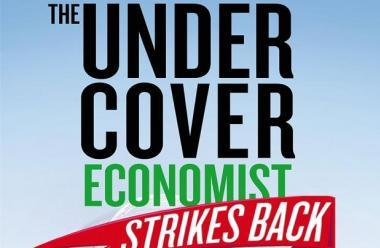Tim Harford is our finest populiser of economics. Unlike the authors of Freakonomics, he doesn’t strive for sensation, but explains complex concepts clearly and with a light touch.
In his latest book, the microeconomist turns macro, using the Q&A format of his Financial Times column to show what GDP measures and what it doesn’t, how labour markets work and often don’t, and how much inflation is ‘just enough’.
He’s a great storyteller. A babysitting co-operative illustrates how insufficient liquidity can cause recessions and how Keynesian policies work. The author of the Phillips curve was a brilliant engineer, who built tiny concealed radios while a prisoner of the Japanese. He later constructed a hydraulic model of the national economy that could solve nine differential equations simultaneously.
It would be years before electronic computers could model the economy as well as Bill Phillips’ MONIAC. Harford uses another prison camp story to show how market institutions emerge spontaneously and how prices can become sticky. Anybody could learn something from this, but business readers might find more challenging ideas in Harford’s previous book, Adapt, Why Success Always Starts with Failure. This is packed with even more varied stories but also a thesis that most managers will find difficult to accept: most businesses (and governments) fail, often because of rigid hierarchies and groupthink.
The only ones with any hope of longevity are those that adapt to change, and that can only be achieved by endless experimentation and exploration, improvisation and trial-and-error. Rather than trying to get everything right first time, Harford argues that we should embrace failure and learn from our mistakes. The Soviet economic system, for example, collapsed because of its inability to experiment. It could not tolerate variety and so the whole system was unable to adapt and progress.
Markets create wealth by having lots of experiments and therefore lots of failures. Gutenberg’s printing press effectively made the modern world, but Gutenberg himself went bankrupt, as did most start-up printing businesses in the late 15th century. And of the 2,000 automotive firms operating in the US at the turn of the 20th century, only 1% survived. Businesses, of course, want to beat these odds. The trick is to conduct many experiments on a sufficiently small scale that none of them has the potential to destroy the business. One success can transform fortunes, but without the willingness to risk failure we will never succeed.
This review was taken from the June 2014 issue of Market Leader. Browse the archive here.
Newsletter
Enjoy this? Get more.
Our monthly newsletter, The Edit, curates the very best of our latest content including articles, podcasts, video.
Become a member
Not a member yet?
Now it's time for you and your team to get involved. Get access to world-class events, exclusive publications, professional development, partner discounts and the chance to grow your network.

